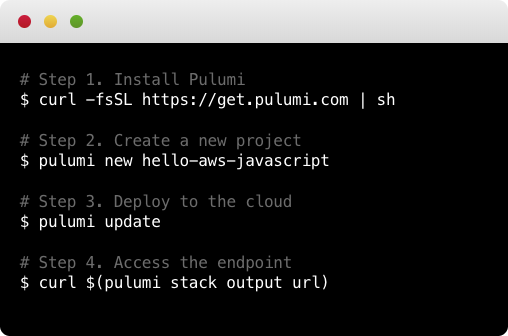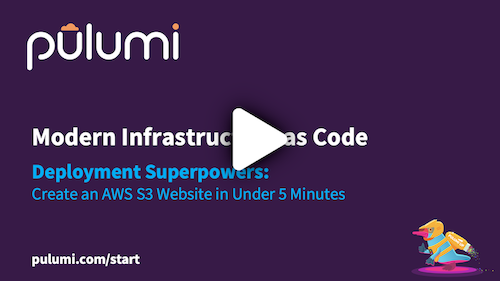The current behavior of `pulumi import` for a particular resource is a bit strange. It was designed to generate the smallest usable set of input properties for a resource using the following algorithm: 1. Read the current inputs and state (I_c, S_c) from the provider 2. Copy required inputs from I_c to a new input set I_n 3. Run I_n through the provider's Check method with the old inputs set to I_c, erroring on validation failures 4. Diff I_n against S_c 5. Copy the values of any differing properties from I_c into I_n The most problematic pieces of this algorithm are (2) and (3). In these steps, the engine first disregards any optional inputs under the assumption that their values are not required in order for `Check` to succeed, and that if omitting these values would cause diffs that they will be copied over during (5). Unfortunately, the former assumption is false and the latter can generate code that is misleading. In the former case, some providers model mutually-exclusive properties as optional properties where exactly one must be set. This then causes Check to fail in (3), halting the import process. The errors this process produces are opaque to the user, and worse, there is no corrective action the user can take in order to unblock themselves. We can simplify the implementation of `pulumi import` and allow users to unblock themselves by eliminating the check/diff/copy, taking the inputs from the provider wholesale, and either eliminating the call to Check altogether or lowering Check failures to warnings instead of errors. With this approach, the user always ends up with a successfully imported resource, though the codegen'd definition may need modifications before the program successfully runs. Improvements in providers' calculation of accurate input sets can then be delivered incrementally with somewhat less urgency, as users are no longer blocked. A somewhat more radical alternative might be to skip storing the imported resources in the stack's state altogether and instead generate definitions that set the `import` resource option. This approach lowers the `pulumi import` command to a simple codegen step. Though this requires more work on the part of the user, it may fit more cleanly into our overall design, as it builds on top of existing features. This design also has the advantage of ensuring that a resource never ends up in a stack's state until its definition is accurate. |
||
|---|---|---|
| .devcontainer | ||
| .github | ||
| .gitpod | ||
| .vscode | ||
| build | ||
| coverage | ||
| developer-docs | ||
| docker | ||
| pkg | ||
| scripts | ||
| sdk | ||
| tests | ||
| .dockerignore | ||
| .gitignore | ||
| .gitpod.yml | ||
| .golangci.yml | ||
| .goreleaser.prerelease.yml | ||
| .goreleaser.yml | ||
| .readthedocs.yaml | ||
| .yarnrc | ||
| CHANGELOG.md | ||
| CHANGELOG_PENDING.md | ||
| CODE-OF-CONDUCT.md | ||
| CONTRIBUTING.md | ||
| LICENSE | ||
| Makefile | ||
| README.md | ||
| codecov.yml | ||
| youtube_preview_image.png | ||
README.md


Pulumi's Infrastructure as Code SDK is the easiest way to create and deploy cloud software that use containers, serverless functions, hosted services, and infrastructure, on any cloud.
Simply write code in your favorite language and Pulumi automatically provisions and manages your AWS, Azure, Google Cloud Platform, and/or Kubernetes resources, using an infrastructure-as-code approach. Skip the YAML, and use standard language features like loops, functions, classes, and package management that you already know and love.
For example, create three web servers:
let aws = require("@pulumi/aws");
let sg = new aws.ec2.SecurityGroup("web-sg", {
ingress: [{ protocol: "tcp", fromPort: 80, toPort: 80, cidrBlocks: ["0.0.0.0/0"]}],
});
for (let i = 0; i < 3; i++) {
new aws.ec2.Instance(`web-${i}`, {
ami: "ami-7172b611",
instanceType: "t2.micro",
securityGroups: [ sg.name ],
userData: `#!/bin/bash
echo "Hello, World!" > index.html
nohup python -m SimpleHTTPServer 80 &`,
});
}
Or a simple serverless timer that archives Hacker News every day at 8:30AM:
const aws = require("@pulumi/aws");
const snapshots = new aws.dynamodb.Table("snapshots", {
attributes: [{ name: "id", type: "S", }],
hashKey: "id", billingMode: "PAY_PER_REQUEST",
});
aws.cloudwatch.onSchedule("daily-yc-snapshot", "cron(30 8 * * ? *)", () => {
require("https").get("https://news.ycombinator.com", res => {
let content = "";
res.setEncoding("utf8");
res.on("data", chunk => content += chunk);
res.on("end", () => new aws.sdk.DynamoDB.DocumentClient().put({
TableName: snapshots.name.get(),
Item: { date: Date.now(), content },
}).promise());
}).end();
});
Many examples are available spanning containers, serverless, and infrastructure in pulumi/examples.
Pulumi is open source under the Apache 2.0 license, supports many languages and clouds, and is easy to extend. This
repo contains the pulumi CLI, language SDKs, and core Pulumi engine, and individual libraries are in their own repos.
Welcome

-
Getting Started: get up and running quickly.
-
Tutorials: walk through end-to-end workflows for creating containers, serverless functions, and other cloud services and infrastructure.
-
Examples: browse a number of useful examples across many languages, clouds, and scenarios including containers, serverless, and infrastructure.
-
Reference Docs: read conceptual documentation, in addition to details on how to configure Pulumi to deploy into your AWS, Azure, or Google Cloud accounts, and/or Kubernetes cluster.
-
Community Slack: join us over at our community Slack channel. Any and all discussion or questions are welcome.
-
GitHub Discussions: Ask your questions or share what you're building with Pulumi.
-
Roadmap: check out what's on the roadmap for the Pulumi project over the coming months.
Getting Started
See the Get Started guide to quickly get started with Pulumi on your platform and cloud of choice.
Otherwise, the following steps demonstrate how to deploy your first Pulumi program, using AWS Serverless Lambdas, in minutes:
-
Install:
To install the latest Pulumi release, run the following (see full installation instructions for additional installation options):
$ curl -fsSL https://get.pulumi.com/ | sh -
Create a Project:
After installing, you can get started with the
pulumi newcommand:$ mkdir pulumi-demo && cd pulumi-demo $ pulumi new hello-aws-javascriptThe
newcommand offers templates for all languages and clouds. Run it without an argument and it'll prompt you with available projects. This command created an AWS Serverless Lambda project written in JavaScript. -
Deploy to the Cloud:
Run
pulumi upto get your code to the cloud:$ pulumi upThis makes all cloud resources needed to run your code. Simply make edits to your project, and subsequent
pulumi ups will compute the minimal diff to deploy your changes. -
Use Your Program:
Now that your code is deployed, you can interact with it. In the above example, we can curl the endpoint:
$ curl $(pulumi stack output url) -
Access the Logs:
If you're using containers or functions, Pulumi's unified logging command will show all of your logs:
$ pulumi logs -f -
Destroy your Resources:
After you're done, you can remove all resources created by your program:
$ pulumi destroy -y
To learn more, head over to pulumi.com for much more information, including tutorials, examples, and details of the core Pulumi CLI and programming model concepts.
Platform
CLI
| Architecture | Build Status |
|---|---|
| Linux/macOS x64 | |
| Windows x64 |
Languages
| Language | Status | Runtime | |
|---|---|---|---|
| JavaScript | Stable | Node.js 12+ | |
| TypeScript | Stable | Node.js 12+ | |
| Python | Stable | Python 3.6+ | |
| Go | Stable | Go 1.14+ | |
| .NET (C#/F#/VB.NET) | Stable | .NET Core 3.1+ |
Clouds
See Supported Clouds for the full list of supported cloud and infrastructure providers.
Contributing
Please See CONTRIBUTING.md for information on building Pulumi from source or contributing improvements.




